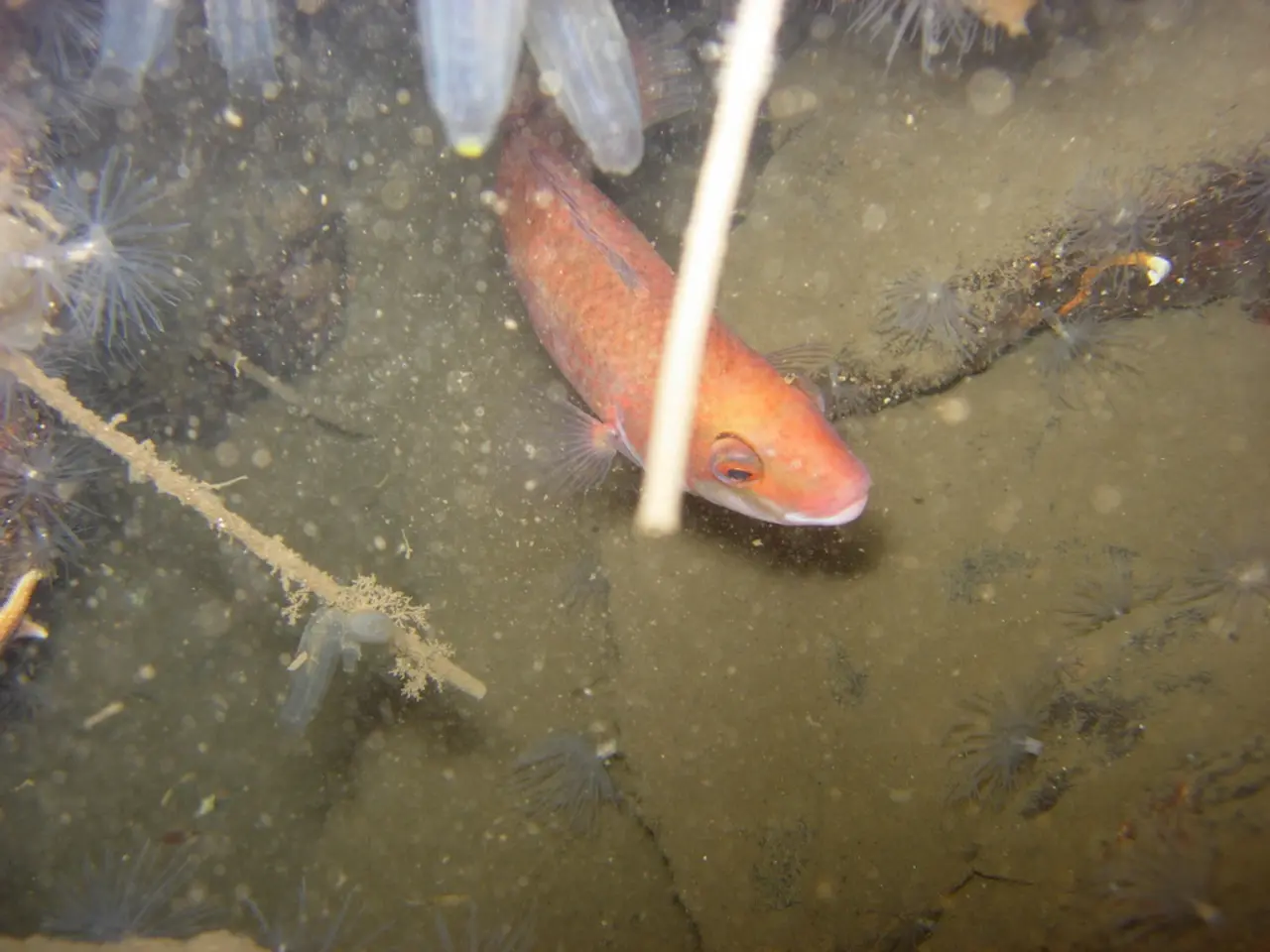Low-Priced, Lucrative Venture in Mandarin Fish Farming Benefits Small-Scale Ornamental Fish Entrepreneurs
The Mandarin fish, scientifically known as Synchiropus splendidus, is a small, vibrant fish often called the "jewel of the sea." Native to coral reefs in the Pacific Ocean, this unique species has found a home in aquariums around the world. Here's a comprehensive guide to creating the perfect environment for these captivating creatures.
Mandarin fish can breed in captivity, with their eggs hatching in just 12 hours. These fish are known for their velvet-like appearance, not scales, due to special skin pigments. In the wild, they eat tiny live creatures called copepods and amphipods.
For those interested in Mandarin fish farming, government fishery departments such as MPEDA and CMFRI sometimes conduct training for ornamental fish farming. Financial help is available for setting up tanks and filters in some cases, making it an environmentally friendly and creative way to earn money, especially in coastal villages and towns.
In tanks, Mandarin fish need live food like brine shrimp or frozen mysis shrimp. A healthy Mandarin fish can sell for Rs. 500 to Rs. 3000 in the Indian market, and even higher for export-quality fish. Mandarin fish farming can provide a regular income for farmers with just a few tanks and a steady supply of live food.
The optimal tank environment for Mandarin fish includes a mature, well-established aquarium of at least 30 gallons in size. A larger tank (65 gallons or more) is recommended to support a sustainable population of live food. The tank must have a stable marine environment with water temperature between 24°C and 28°C, salinity between 1.020 and 1.025, and pH in the range of 8.1 to 8.4.
The aquascape should provide plenty of live rock and hiding places, especially rocks piled in a way that creates a "pod pile." This pod pile is essential as it shelters and promotes the growth of copepods and amphipods, the fish's primary food source. Feeding this pod pile with small amounts of frozen or fresh fish food every few days helps sustain the pod population.
Mandarin fish are peaceful species that do not harm other fish. When choosing tankmates, opt for peaceful, reef-safe species that won’t outcompete Mandarins for food or harass them. Mandarin fish prefer a quiet environment and spend much of their time resting on or between corals and rocks.
Feeding Mandarin fish primarily involves maintaining a robust population of live pods in the aquarium. Supplement the pod pile with frozen or fresh fish food every couple of days to ensure the pods have enough nutrition to multiply without food rotting inside the pile. In breeding contexts, larvae require very fine micro-foods such as rotifers or phytoplankton due to their tiny size.
In conclusion, the optimal Mandarin fish tank is a well-established, mature, and sufficiently large marine aquarium with stable water parameters, ample live rock and hiding spots, and a thriving live pod ecosystem sustained by careful supplemental feeding. This setup supports both the health of the Mandarin fish and the availability of their natural diet, which is difficult to substitute with prepared foods. Mandarin fish farming is ideal for small families, women, and youth looking to start a business from home.
In the realm of home-and-garden and self-development, Mandarin fish farming could be a rewarding educational venture, providing a unique blend of lifestyle and income. With a focus on learning about aquatic life and ornamental fish farming, one could attend training programs offered by entities like MPEDA and CMFRI, fostering an environmentally friendly and financially viable practice, particularly in coastal regions.
The Mandarin fish tank becomes an integral part of one's home-and-garden, serving as a testament to self-development and learning, while also offering a captivating display of the 'jewel of the sea.' This environment incorporates other educational elements such as learning about water parameters, tank management, and the necessity of live food like brine shrimp or frozen mysis shrimp for maintaining a healthy Mandarin fish population.




